You can take part in Ontario’s provincial government decision-making process by providing comments and feedback on new and proposed changes to acts, regulations, policies and instruments (permits, approvals and orders).
Ontario’s Regulatory Registry
Ontario’s Regulatory Registry is where the Ontario government accepts feedback from the public on proposed regulations, legislation, policies, and forms that affect Ontario’s regulated entities, including for-profit business, not-for-profit organizations, broader public sector, municipalities, and long-term care homes.
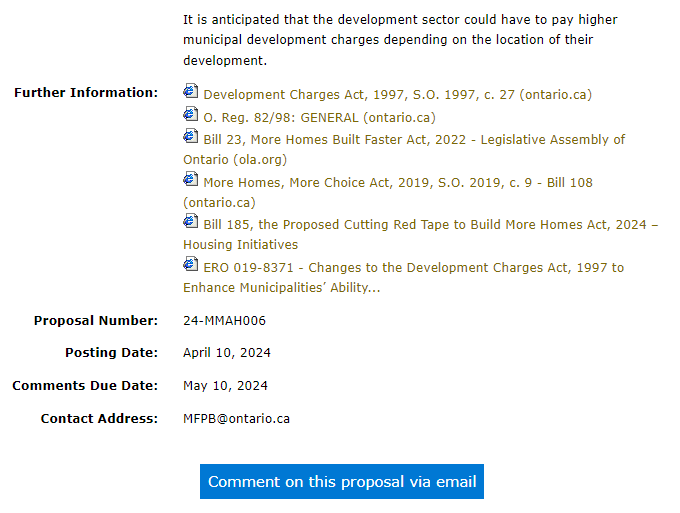
- Ontario government posts summaries of new proposals. You can sign up for email alerts here (or RSS feeds)
- Stakeholders comment on the proposal
- Ministries consider comments received through the consultation process
- Provincial policy instrument is approved and its plain language summary is posted on the Registry website.
The Registry’s purpose is to:
- Encourage more regulated entities to participate in developing better provincial policy instruments in Ontario.
- Help regulated entities to develop a better understanding of provincial policy instruments in Ontario and how to comply with them.
- Assist the Ontario government in understanding how new provincial policy instruments may affect the competitiveness of the business sector in this province.
Proposals that are financially sensitive or are proposed in response to an emergency affecting public health or safety are not posted.
Example
For example, in December 2022, the province posted a proposed policy Proposed Amendments to the Greenbelt Plan to remove 15 areas of land from the Greenbelt totaling approximately 7,400 acres in order to facilitate the construction of approximately 50,000 or more new homes in the Greater Golden Horseshoe.
After public outcry, the province reversed its decision in Proposal to return lands to the Greenbelt – Greenbelt Statute Law Amendment Act, 2023
Environmental Registry of Ontario
The Environmental Bill of Rights, 1993 gives you the right to participate in decisions that could impact Ontario’s air, water, land, and wildlife, including:
- comment on specified environmental government proposals
- ask ministries subject to the act for either a new policy, act, or regulation, or to review of an existing policy, act, regulation or instrument
- ask certain ministries to investigate an alleged harm to the environment
- seek leave (permission) to appeal ministry decisions on certain instruments, such as permits, licences, approvals or orders
- in some cases, sue someone for causing harm to the environment
- get whistleblower protection
Environmental Registry of Ontario (ERO) is where the Ontario government provides notice and accepts feedback from the public on proposed changes or new provincial legislation including acts, regulations, policies and instruments (permits, approvals and orders) that might impact on the environment for a minimum of 30 days.
The consultation process includes:
- Proposal – Government posts notices on proposals that may affect the environment including what they want to do, what it will impact and links to supporting material
- Review – Public comments on the notices and government reviews the
- Decision – Government makes a decision, taking comments into account
- how comments were taken into consideration
- the number of comments we received
- our decision on what we’re doing
- Appeal
Proposals that are proposed in response to an emergency, affecting public health or safety are not posted skip the commenting stage right to the decision stage.
Bulletins are notices that are for information only and don’t have a consultation or proposal stage.
Register to sign up for email notifications
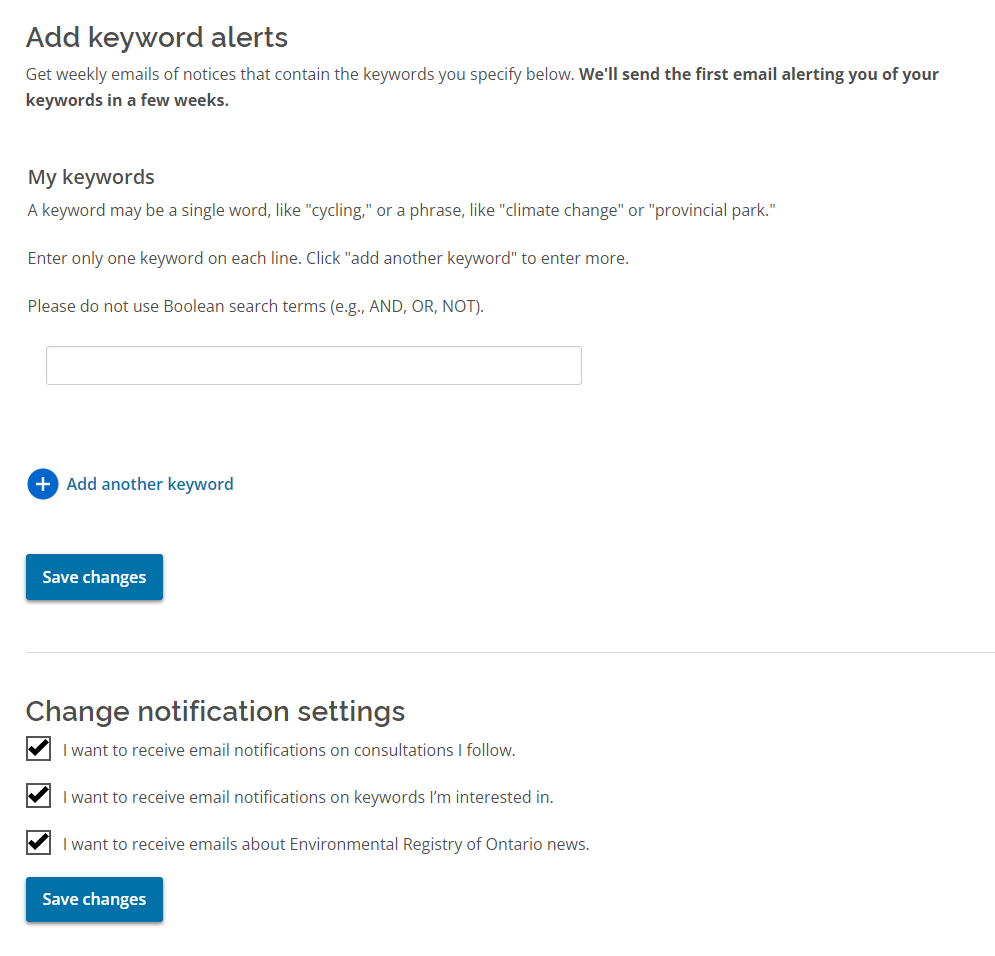
Example
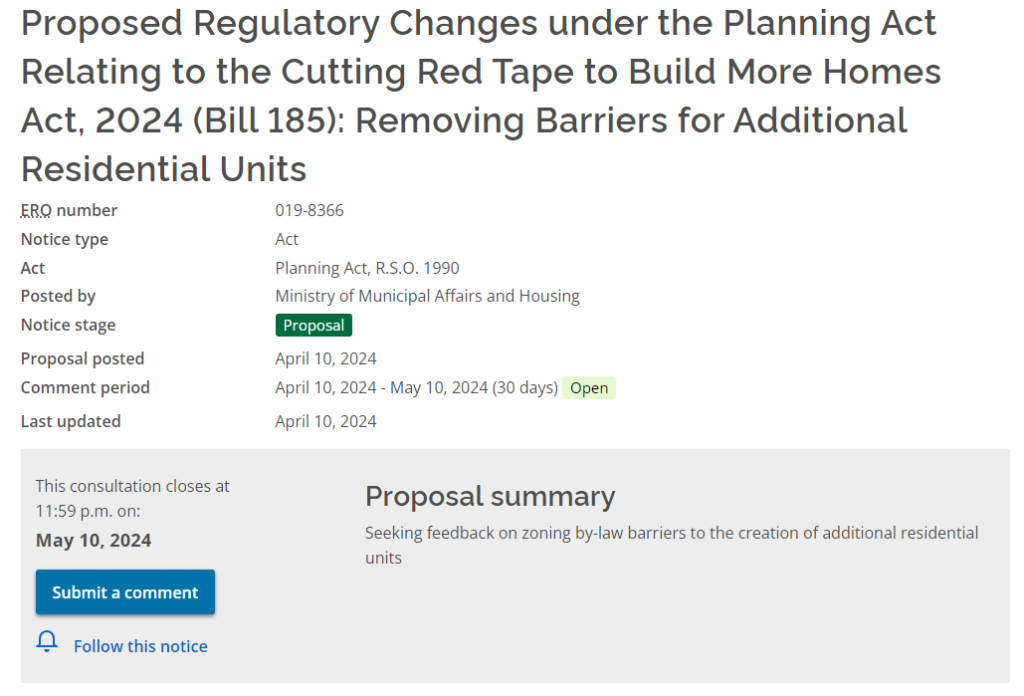
For example, ERO Notice 019-8366 was posted on April 10, 2024 and accepted comments for 30 days until May 10, 2024. It outlines the regulatory changes to the Planning Act to allow for the accelerated province-wide implementation of additional residential units (ARUs).
Thee changes allow 3 units “as-of-right” (no requirement to apply for rezoning) for up to 3 units per lot in existing residential areas (3 units in the primary building, or up to 2 units allowed in the primary building and 1 unit allowed in an ancillary building such as a garage).
The discussion questions provided were as follows:
- Are there specific zoning by-law barriers standards or requirements that frustrate the development of ARUs (e.g., maximum building height, minimum lot size, side and rear lot setbacks, lot coverage, maximum number of bedrooms permitted per lot, and angular plane requirements, etc.)?
- Are there any other changes that would help support development of ARUs?
Submissions to this notice were made publicly available here and included:
Regarding the public notification change: Adding a municipal website is fine, but what is wrong with the wording on the public notification requirements is the word “or.”
I worked as a public sector planner in western Canada and the public hearing notifications I dealt with were:
Mailings to all residents and businesses within a specified distance, AND
Advertisements in the newspaper AND
A notice posted on the site.If public notice is being met simply by having a notice on a municipal website, an applicant is not reaching out to citizens for comments. It is just placing it somewhere where a few people might stumble upon it.
Public notification should involve reaching out to citizens and consideration that not all receive newspapers, or look on municipal websites in case there is something of interest there.“Or” should be replaced with “And.”
Individual who worked as a public sector planner in western Canada
No question, posting detailed information about proposed planning applications and proposed by-laws on a municipal website will be useful to individuals seeking more information. However, unlike a notice in a community newspaper, an individual would typically not visit a municipal website on a regular basis unless they anticipated new information would be posted.
Although municipal websites can be used effectively to share information, they are not as useful in notifying the public that new information is available. Therefore, OFA recommends that in addition to modernizing how notice can be provided through municipal websites, municipalities should also be required to offer the public the opportunity to sign-up for email notifications and notify those who have signed up when additional notices are added to a municipal website.
Ontario Federation of Agriculture (OFA)
- Conservation Ontario
- Association of Municipalities of Ontario (AMO)
- City of Owen Sound
- Town of Oakville
- Village Media
- London Development Institute
- Wellington County
- City of Barrie
- City of Hamilton
- City of Quinte West
- City of St. Catharines
- City of Toronto
- Town of Niagara-on-the-Lake
- Municipality of Clarington
- Toronto Catholic District School Board (TCDSB)
- Tay Valley Township
- City of Kawartha Lakes
- City of Mississauga
- City of Brampton
- Township of Laurentian Valley
- Town of Renfrew
- Town of Halton Hills
- City of Burlington
- Town of Newmarket
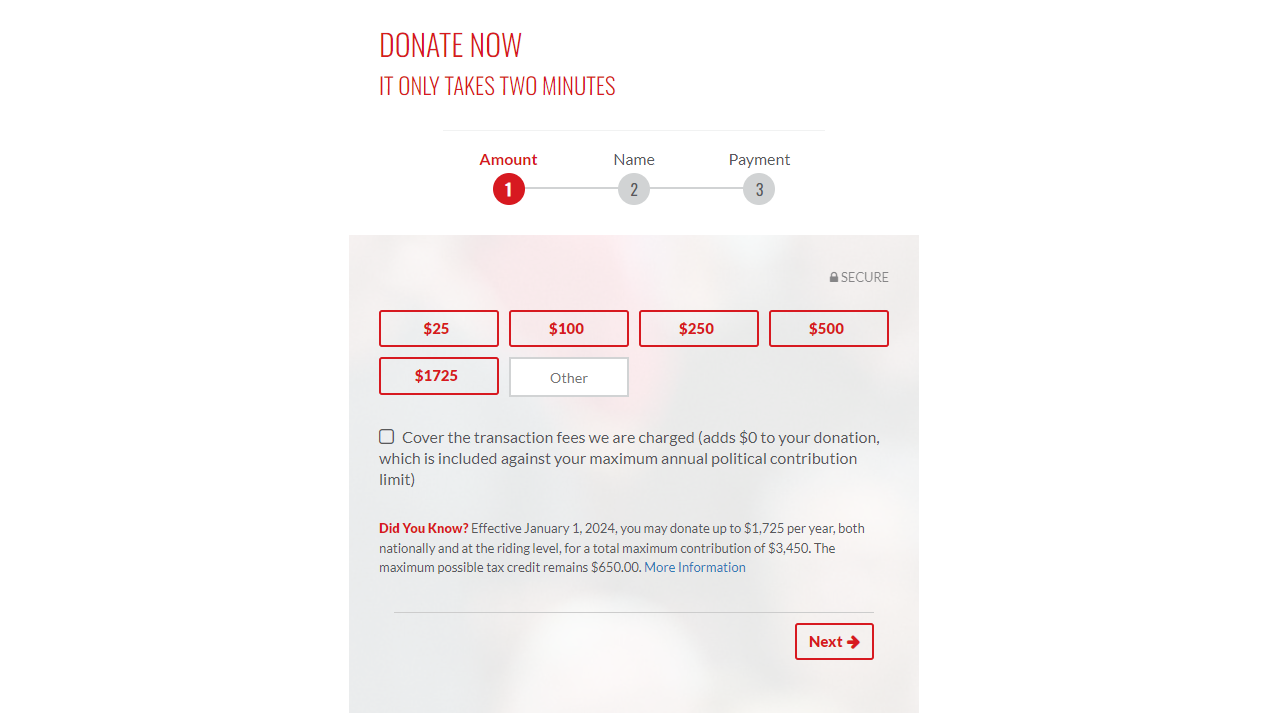
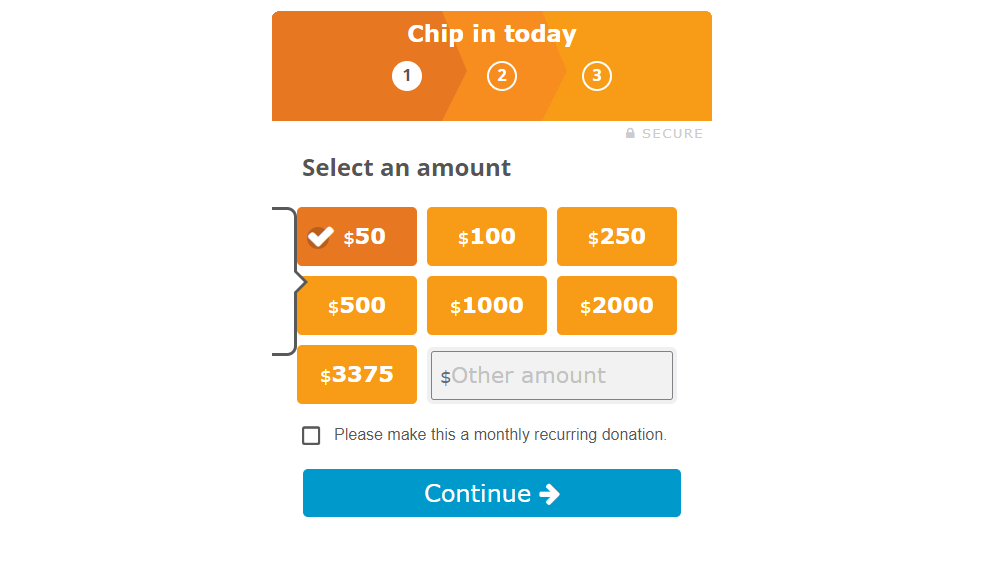
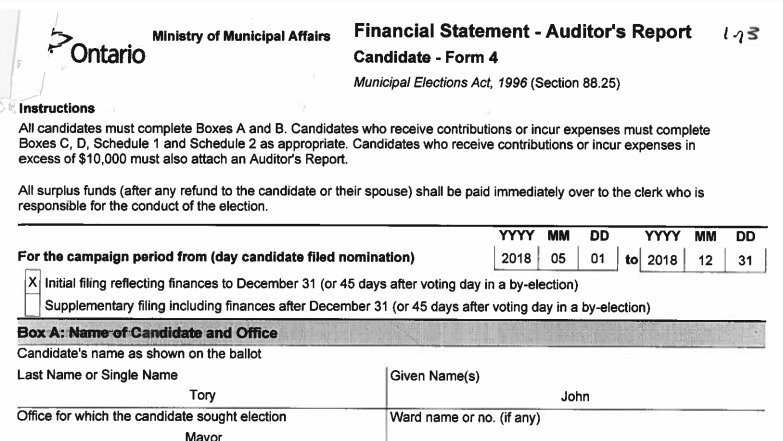
Comments
We want to hear from you! Share your opinions below and remember to keep it respectful. Please read our Community Guidelines before participating.